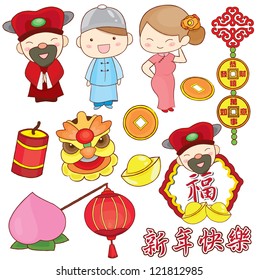As the world spins through turbulent times, our living spaces transform into sanctuaries of comfort and style, with interior design reflecting not just personal aesthetics but cultural narratives. Among the rising trends illuminating the interior design landscape is the striking combination of archaic charm and modern sensibilities evident in New Look and the Model Elements Couch: a veritable retro revival that beckons to lovers of nostalgia and style enthusiasts alike. Are you ready to explore this captivating convergence of old and new?
The New Look movement, famously introduced by Christian Dior in the mid-20th century, renewed the fashion world with an emphasis on femininity and luxurious craftsmanship, revitalizing the post-war design sphere. Now, as this ethos permeates into interior design, we find the Model Elements Couch at the forefront, serving not merely as a piece of furniture but as a statement of artistic endeavor and lifestyle choice. It whispers to us from the past, inviting us to reimagine the bounds of our modern spaces.
Consider the Model Elements Couch as the epitome of this resurgence. Its design, replete with rich textures, angular forms, and sumptuous fabrics, summons the grandeur of days gone by while simultaneously embracing contemporary functionality. Each curve and contour is an homage to the Mid-Century Modern aesthetic—a pivotal era marked by clean lines and organic forms—that continues to resonate today. Its silhouette, a harmonious blend of robust and delicate nuances, challenges us to reflect on the impact of our choices in furnishing the haven we live in.
What makes the Model Elements Couch intriguing is its inherent versatility. It effortlessly transitions between spaces and styles. Imagine it positioned in a loft, flanked by eclectic art pieces, or perhaps nestled within a minimalist sanctuary where every object speaks of intention and simplicity. This adaptability challenges the conventional notion of the couch as merely a utility. Instead, it becomes a canvas upon which we can paint our unique narratives—a dialogue between past aesthetics and modern living.
The textiles employed in the Model Elements Couch are nothing short of spectacular. The selection often showcases an array of bold patterns and muted earth tones, evoking a sense of warmth and sophistication. Picture the tactile sensation of a velvet finish, inviting you to sink into its embrace after a long day. This tactile interplay of materiality not only augments the visual impact but also enhances the emotional resonance of the piece. It beckons us to engage with it—a piece that not only exists in our homes but also in our lives.
The resurgence of retro-inspired furniture, akin to the delightful designs of the 60s and 70s, is not merely an aesthetic choice but a philosophical one. It calls upon us to examine consumerism and sustainability—of crafting spaces that tell stories rather than merely fill voids. The Model Elements Couch, often crafted using sustainable methods and materials, serves as a catalyst for this broader conversation. It compels us to rethink our approach to furnishing; to consider the legacy we leave behind with our choices.
As we delve deeper into this retro revival, it’s pertinent to consider the broader context of how design influences culture. This couch does not exist in a vacuum; it reflects and shapes societal trends, from a growing appreciation for craftsmanship to an embrace of timeless design principles steeped in history. It bridges generations, inviting conversations about aesthetics, identity, and the stories our furniture encapsulates.
Now, let’s pivot to the emotional essence that the Model Elements Couch ignites. Picture gathering with friends under the warm embrace of nostalgia, reminiscing as you laugh and share stories on a couch that feels like a well-worn friend. It is this emotional connection that anchors a piece of furniture in a home, transcending its role as mere décor. A couch becomes a silent witness to life’s moments—the quiet evenings, the raucous gatherings, the cozy afternoons spent in solitude with a good book.
Furthermore, the interplay of oppositions within the design—between minimalism and maximalism, classic and contemporary—invites us to explore the essence of personal expression in our environments. How can the Model Elements Couch instigate a dialogue about our aesthetic choices? Does it compel you to delve into the depths of your design philosophy, challenging you to consider colors, textures, and styles that reflect not just fleeting trends but enduring values?
Moving beyond aesthetics, we must confront the technological prowess evident in modern iterations of retro designs. Smart fabrics, modular constructions, and innovative materials add a layer of practicality that complements the vintage allure. The Model Elements Couch stands as a testament to this evolution, balancing appearance with purpose, and urging us to think critically about how we inhabit our spaces amid the rapid changes of contemporary life.
In conclusion, New Look and the Model Elements Couch present more than a fleeting trend; they offer a profound invitation—to engage in a design philosophy that marries nostalgia with innovation, emotional resonance with functionality. As you contemplate incorporating such a piece into your home, consider what it says about you. This journey into retro revival challenges you to reimagine your space, not just as a shelter, but as a canvas where your life unfolds, marked by memories, style, and the audacity to honor the past while passionately embracing the future.

